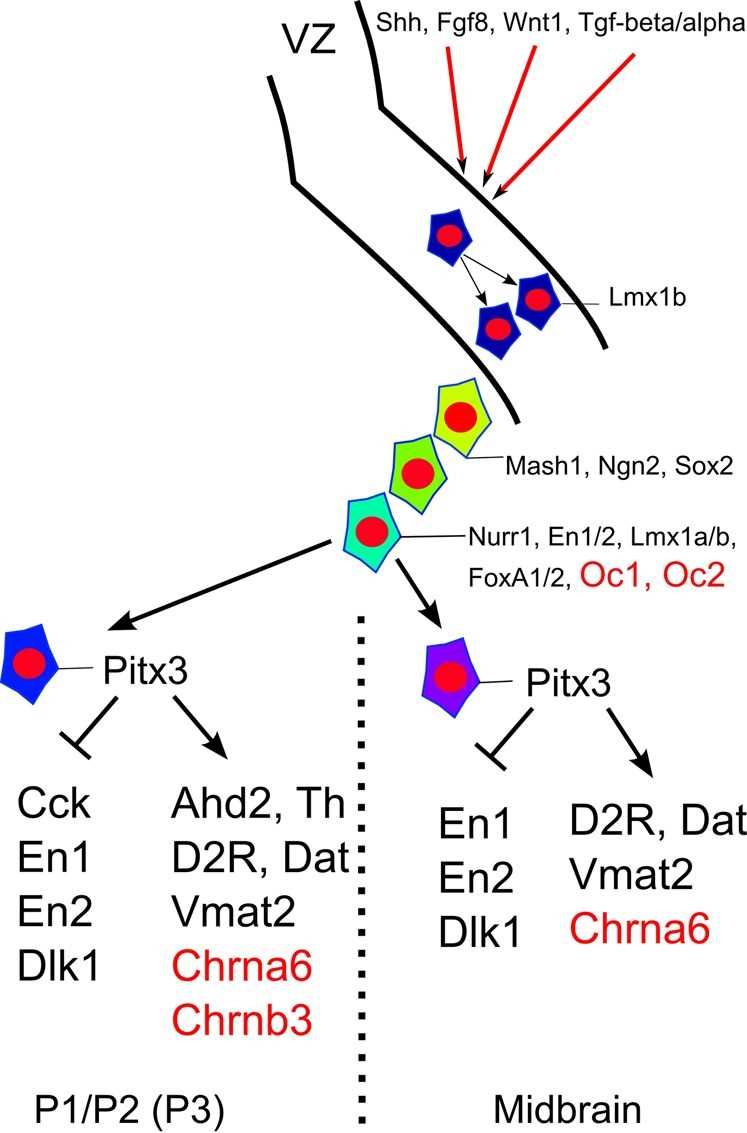Introduction of CHRNA6
CHRNA6, also known as neuronal acetylcholine receptor subunit alpha-6, is a human α6 subunit found primarily in the brain. It is a molecule weight of 56 kDa and belongs to the ligand-gated ion channel (TC 1.A.9) family, acetylcholine receptor (TC 1.A.9.1) subfamily, alpha-6/CHRNA6 sub-subfamily. The subunit has 3 domains including signal, transmembrane, transmembrane helix. It is component of cell junction, cell membrane, postsynaptic cell membrane, and synapse.
| Basic Information of CHRNA6 | |
| Protein Name | Neuronal acetylcholine receptor subunit alpha-6 |
| Gene Name | CHRNA6 |
| Aliases | CHNRA6 |
| Organism | Homo sapiens (Human) |
| UniProt ID | Q15825 |
| Transmembrane Times | 4 |
| Length (aa) | 494 |
| Sequence | MLTSKGQGFLHGGLCLWLCVFTPFFKGCVGCATEERLFHKLFSHYNQFIRPVENVSDPVTVHFEVAITQLANVDEVNQIMETNLWLRHIWNDYKLRWDPMEYDGIETLRVPADKIWKPDIVLYNNAVGDFQVEGKTKALLKYNGMITWTPPAIFKSSCPMDITFFPFDHQNCSLKFGSWTYDKAEIDLLIIGSKVDMNDFWENSEWEIIDASGYKHDIKYNCCEEIYTDITYSFYIRRLPMFYTINLIIPCLFISFLTVLVFYLPSDCGEKVTLCISVLLSLTVFLLVITETIPSTSLVVPLVGEYLLFTMIFVTLSIVVTVFVLNIHYRTPTTHTMPRWVKTVFLKLLPQVLLMRWPLDKTRGTGSDAVPRGLARRPAKGKLASHGEPRHLKECFHCHKSNELATSKRRLSHQPLQWVVENSEHSPEVEDVINSVQFIAENMKSHNETKEVEDDWKYVAMVVDRVFLWVFIIVCVFGTAGLFLQPLLGNTGKS |
Function of CHRNA6 Membrane Protein
Nicotine acetylcholine receptors (nAChRs) are made up of a combination of two different protein subunits, α, and β. There are 8 different α (α2-α7, α9-α10) and four different β subunits (β2 - β4). The triggering, closure, and desensitization of nAChRs are each influenced by α and β subunits of which they are comprised. The CHRNA6 membrane protein is related to impulsive behaviors like nicotine initiation and dependence and alcohol abuse. These behaviors are considered to be impulsive because they privilege immediate small rewards over long-term health benefits. These behaviors are in turn highly correlated with impulsivity as measured by the delay discount task. Furthermore, the nAChRs which contain subunit alpha-6 can function as a possible therapeutic target for the treatment of Parkinson's disease, because of their selective localisation on dopaminergic neurons.
 Fig.1 Overview of the molecular program essential to building mdDA neurons. (Chakrabarty, 2012)
Fig.1 Overview of the molecular program essential to building mdDA neurons. (Chakrabarty, 2012)
Application of CHRNA6 Membrane Protein in Literature
This article shows that CHRNB3/A6 is highly related to nicotine dependence (ND) in a large Chinese Han sample.
This article reports the association of CHRNB3-CHRNA6 cluster with ND-related phenotypes in Korean and offers a way to elucidate the molecular mechanisms of ND-related phenotypes and ND.
This article suggests that CHRNA6 can be a reliable RGC marker. The CHRNA6 expression reduces with death of RGCs in glaucomatous DBA/2J mice and after optic nerve crush injury.
This article reports that the region containing the CHRNA6/CHRNB3 gene cluster is significantly associated with disease status using both SKAT-O and C-alpha.
This article reveals the involvement of the CHRNB3–CHRNA6 gene cluster in ND. A multitude of genetic studies analyzing various ND phenotypes have implicated variants in this gene cluster in the development of ND.
CHRNA6 preparation options
Membrane protein studies have developed greatly over the past few years. Based on our versatile Magic™ membrane protein production platform, we could offer a series of membrane protein preparation services for worldwide customers in reconstitution forms as well as multiple active formats. Aided by our versatile Magic™ anti-membrane protein antibody discovery platform, we also provide customized anti-CHRNA6 antibody development services.
During the past years, Creative Biolabs has successfully generated many functional membrane proteins for our global customers. We are happy to accelerate the development of our clients’ programs with our one-stop, custom-oriented service. For more detailed information, please feel free to contact us.
Reference
All listed services and products are For Research Use Only. Do Not use in any diagnostic or therapeutic applications.